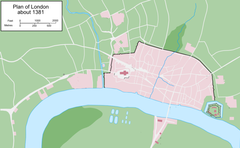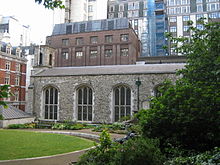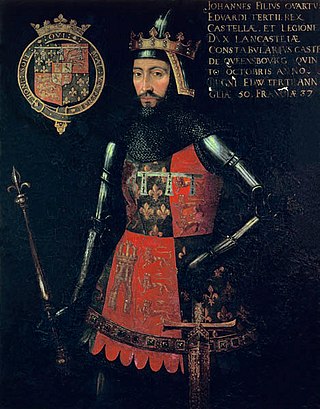
John of Gaunt, Duke of Lancaster was an English royal prince, military leader, and statesman. He was the third surviving son of King Edward III of England, and the father of King Henry IV. Due to Gaunt's royal origin, advantageous marriages, and some generous land grants, he was one of the richest men of his era, and was an influential figure during the reigns of both his father and his nephew, Richard II. As Duke of Lancaster, he is the founder of the royal House of Lancaster, whose members would ascend the throne after his death. His birthplace, Ghent in Flanders, then known in English as Gaunt, was the origin of his name. When he became unpopular later in life, a scurrilous rumour circulated, along with lampoons, claiming that he was actually the son of a Ghent butcher. This rumour, which infuriated him, may have been inspired by the fact that Edward III had not been present at his birth.

The Savoy Theatre is a West End theatre in the Strand in the City of Westminster, London, England. The theatre was designed by C. J. Phipps for Richard D'Oyly Carte and opened on 10 October 1881 on a site previously occupied by the Savoy Palace. Its intended purpose was to showcase the popular series of comic operas of Gilbert and Sullivan, which became known as the Savoy operas.

Strand is a major thoroughfare in the City of Westminster, Central London. The street, which is part of London's West End theatreland, runs just over 3⁄4 mile (1.2 km) from Trafalgar Square eastwards to Temple Bar, where the road becomes Fleet Street in the City of London, and is part of the A4, a main road running west from inner London.

The Savoy Hotel is a luxury hotel located in the Strand in the City of Westminster in central London, England. Built by the impresario Richard D'Oyly Carte with profits from his Gilbert and Sullivan opera productions, it opened on 6 August 1889. It was the first in the Savoy group of hotels and restaurants owned by Carte's family for over a century. The Savoy was the first hotel in Britain to introduce electric lights throughout the building, electric lifts, bathrooms in most of the lavishly furnished rooms, constant hot and cold running water and many other innovations. Carte hired César Ritz as manager and Auguste Escoffier as chef de cuisine; they established an unprecedented standard of quality in hotel service, entertainment and elegant dining, attracting royalty and other rich and powerful guests and diners.
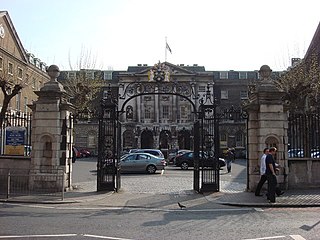
Guy's Hospital is an NHS hospital in the borough of Southwark in central London. It is part of Guy's and St Thomas' NHS Foundation Trust and one of the institutions that comprise the King's Health Partners, an academic health science centre.

The Church of St Margaret, Westminster Abbey is in the grounds of Westminster Abbey on Parliament Square, London, England. It is dedicated to Margaret of Antioch, and forms part of a single World Heritage Site with the Palace of Westminster and Westminster Abbey.
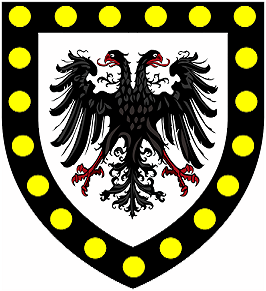
Henry Killigrew was an English clergyman and playwright. He became a chaplain to Charles I, and chaplain and almoner to James, Duke of York. Following the Restoration, he became Master of the Savoy.
A royal peculiar is a Church of England parish or church exempt from the jurisdiction of the diocese and the province in which it lies, and subject to the direct jurisdiction of the monarch or, in Cornwall, of the Duke of Cornwall.
The Dean of the Chapel Royal, in any kingdom, can be the title of an official charged with oversight of that kingdom's chapel royal, the ecclesiastical establishment which is part of the royal household and ministers to it.
Henry Yevele (c. 1320 – 1400) was the most prolific and successful master mason active in late medieval England. The first document relating to him is dated 3 December 1353, when he purchased the freedom of London. In February 1356 he was sufficiently well known as a mason that he was chosen as one of a commission of six cutting masons who were to inform the mayor and aldermen about the acts and articles of the craft.

The Precinct of the Savoy, also known as Savoy St John the Baptist, was a component of the Liberty of the Savoy in the county of Middlesex, England, located between the Strand and the River Thames. Formerly extra-parochial, it was a civil parish between 1866 and 1922. It now forms part of the City of Westminster in Greater London.

The Savoy was a manor and liberty located between the Liberty of Westminster, on two sides, the Inner and Middle Temple part of City of London and the River Thames. It was in the county of Middlesex. It was all held by the Duchy of Lancaster, and was also known as the Liberty of the Duchy of Lancaster. The duchy continues to have land holdings within the area. The manor, enjoying the status of a liberty, comprised the precinct of the Savoy, the southern half and detached south-west of the parish of St Clement Danes and about three quarters of St Mary le Strand as it only, in a tiny part, extended north of the Strand whereas those parishes straddled this ancient road.
Groom of the Chamber was a position in the Household of the monarch in early modern England. Other Ancien Régime royal establishments in Europe had comparable officers, often with similar titles. In France, the Duchy of Burgundy, and in England while French was still the language of the court, the title was varlet or valet de chambre. In German, Danish and Russian the term was "Kammerjunker" and in Swedish the similar "Kammarjunkare".

Adelphi is a district of the City of Westminster in London. The small district includes the streets of Adelphi Terrace, Robert Street and John Adam Street. Of rare use colloquially, Adelphi is grouped with Aldwych as the greater Strand district which for many decades formed a parliamentary constituency and civil registration district.
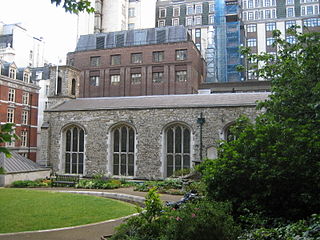
The King's Chapel of St John the Baptist in the Precinct of the Savoy, also known as the King's Chapel of the Savoy, is a church in the City of Westminster, London. Facing it are 111 Strand, the Savoy Hotel, the Institution of Engineering and Technology and – across the green to its side – the east side of Savoy Street. It is designated as a Grade II* listed building.
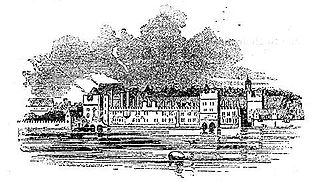
Savoy Place is a large red brick building on the north bank of the River Thames in the City of Westminster. It is on a street called Savoy Place; Savoy Hill and Savoy Street run along the sides of the building up to the Strand. In front is the Victoria Embankment, part of the Thames Embankment. Close by are Savoy Hill House, the Savoy Hotel and Waterloo Bridge. There are commanding views over to the South Bank and the London Eye.
Walter Balcanquhall was a Scottish clergyman who became a staunch royalist and supporter of the church policy of Charles I of England. He was chosen by James I as a delegate from the Church of Scotland to the Synod of Dort.
William Hooke or Hook (1600–1677) was an English Puritan clergyman, in New England for nearly two decades, mostly at New Haven.

In British usage, the term townhouse originally referred to the town or city residence of a member of the nobility or gentry, as opposed to their country seat, generally known as a country house or, colloquially, for the larger ones, stately home. The grandest of the London townhouses were stand-alone buildings, but many were terraced buildings.

